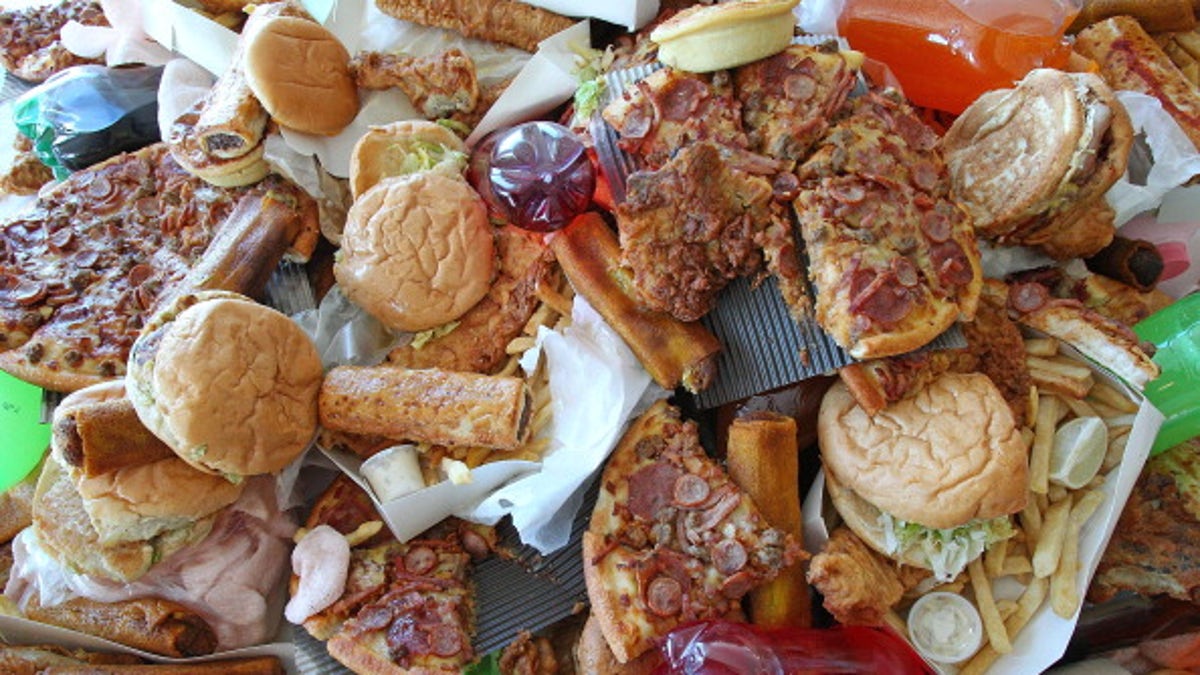
MELBOURNE, AUSTRALIA - MARCH 06: Junk food sits on a table as British Celebrity Chef Jamie Oliver announces a partnership to attack state-wide obesity on March 6, 2012 in Melbourne, Australia. The Victorian Government and the Good Foundation will pledge together over AUD5 million to bring Oliver's 'Ministry of Food' to the state to help teach cooking techniques and nutrition to participants and help combat obesity as part of the Victorian Healthy Eating Enterprise. (Photo by Scott Barbour/Getty Images) (Getty)
On an average day, Latino adults in the U.S. get roughly 11 percent of their calories from fast food, according to a recent survey by the Centers of Disease Control and Prevention.
This is about the same percentage of fast food calories consumed by non-Latino whites.
The number is slightly down from the 13 percent reported in 2006, the last time the government tried to pin down how much of American adults' diet is coming from fast food.
For the research, about 11,000 adults were asked extensive questions about what they ate and drank over the previous 24 hours.
The survey covered the years 2007 through 2010 and was released Thursday by the CDC. The authors couldn't explain why the proportion of calories from fast food dropped from the 13 percent found in a survey for 2003 through 2006.
The figures are averages, since the calculations include people who almost never eat fast food as well as people who eat a lot of it.
Marion Nestle, a nutrition professor at New York University, cast doubts on the latest results, saying 11 percent seemed implausibly low. She said that it wouldn't be surprising if some people underreported their hamburgers, fries and milkshakes since eating too much fast food is increasingly seen as something of a no-no.
"If I were a fast food company, I'd say 'See, we have nothing to do with obesity! Americans are getting 90 percent of their calories somewhere else!'" she said.
The study didn't include the total number of fast food calories, just the percentage. Previous government research suggested that the average U.S. adult consumes about 270 calories of fast food a day — the equivalent of a small McDonald's hamburger and a few fries.
The new study also found that obese people get about 13 percent of daily calories from fast food, compared with less than 10 percent for skinny and normal-weight people.
There was no difference seen by household income, except for young adults. The poorest –those with an annual household income of less than $30,000– got 17 percent of their calories from fast food, while the figure was under 14 percent for the most affluent 20- and 30-somethings with a household income of more than $50,000.
That's not surprising since there are disproportionately higher numbers of fast food restaurants in low-income neighborhoods, Nestle said.
Fast food is accessible and "it's cheap," she said.
Based on reporting by The Associated Press.
Follow us on twitter.com/foxnewslatino
Like us at facebook.com/foxnewslatino
